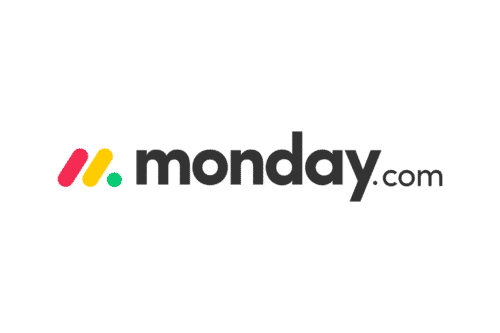Best Project Management Software
Project management software is business software that is used to plan and schedule projects, allocate resources, and manage change. Read on to learn about how project management software works and some of the top project management software solutions on the market.
In this definition...
What Is Project Management Software?
Project management software streamlines collaboration and communication between project stakeholders. The specialty software also helps organizations control budgets, prioritize tasks, perform quality management, and document every resource or service exchanged throughout a project.
Project management software is used in various industries to improve decision-making and overall project productivity. Project managers and team members can view and track progress, organize multiple ongoing projects, and clearly define responsibilities.
Four of the most common types of project management software are desktop, browser-based, client-server, and integrated.
Key Features of Project Management Tools
Scheduling
Calendars or milestone tools such as Gantt charts help organizations schedule meetings, plan activity dates, and outline project tasks. An editable schedule can show task interactions and how much time is left to complete projects.
Task lists
Project management software with task management features allows users to review, assign, and update tasks, keeping everyone on the team informed. Task lists help team members meet deadlines and easily obtain status reports.
File sharing
Document sharing and collaboration features increase productivity by organizing documents in a central repository. Sharing key project documents becomes easier, and no time is wasted searching for files.
Reporting
A reporting feature is important for helping team members understand how a project is progressing. Organizations can also use project management software to facilitate bug and error reporting.
What Are the Benefits of Using Project Management Software?
- Better collaboration: Optimized collaboration prevents unnecessary project delays and allows team members to communicate easily on project goals. Project management software offers native and third-party solutions for teams to communicate and share knowledge during projects.
- Streamlined task delegation: Project managers can quickly assign tasks and send automatic reminders in the software, which keeps roles and responsibilities clear and boosts overall performance.
- Improved project planning: Project managers can use PM software to create a detailed project plan, track KPIs, and ensure all team members have easy access to project details.
- Easier file access and sharing: Storing files in a central repository like PM software facilitates user access management requirements for project teams. More specifically, team members can easily share project documents and thread communications about specific project milestones.
- Effective risk mitigation: Project management software offers the visibility for teams to recognize potential bottlenecks and implement practical solutions to mitigate project risks.
Top Project Management Software and Tools
ClickUp

ClickUp is highly customizable project management software with features like time tracking, Gantt charts, to-do lists, and reminders. It’s best for organizations with many employees.
Teams can embed spreadsheets from Google Sheets or Google Project, track their goals, and use mobile apps. The software’s feature-rich free version lets users create automated workflows for repetitive processes. But it has one major drawback: its mobile app lacks a table view.
ClickUp’s forever-free plan offers 100MB of cloud storage and supports unlimited projects. Users can choose from four premium plans: Unlimited ($5/month per user), Business ($12/month per user), Business Plus ($19/month per user), and Enterprise.
The project management software has trial versions for all its paid plans. A variety of organizations love this PM software option; it has a 4.7/5 rating on both Capterra and G2Crowd.
monday.com

monday.com is easy to use and ideal for organizations of any size. The software can be used to track time, boost communication, produce detailed reports, and manage projects and resources. It’s ideal for creating custom workflows. The solution also comes with 24/7 support and a 360° customer view.
monday.com has an open API that supports custom integrations with third-party applications. Users can track project progress via Kanban, Timeline, or Charts views. The project management software has a clear, visually intuitive interface and a great project reporting dashboard that displays data from multiple boards.
However, users can’t set up recurring tasks, monitor task dependencies, or track time automatically on monday.com. The software also has no free plan.
Paid plans are charged according to the number of users. The Basic plan is $8/month per user. This is another highly favored solution in the market, with users giving it a 4.6/5 rating on G2Crowd and Capterra.
Teamwork

Teamwork is a Kanban-based project management tool with a unique, intuitive dashboard that allows users to view their most recent tasks. Its billing and invoicing features make it ideal for teams that handle client work.
The software provides multiple visualization options, robust reporting, real-time collaboration, and excellent mobile applications.
Organizations that handle complex projects shouldn’t select Teamwork because it has limited reporting capabilities and users cannot add tasks to multiple lists. The software’s Free Forever plan is designed for five users and two projects. Its Deliver plan costs $10 per person per month.
When a user signs up for an account, they automatically get a 30-day trial of the Grow plan. Teamwork is rated 4.5/5 on Capterra and 4.3/5 on G2Crowd.
Zoho Projects

Zoho Projects is a cloud-based project management solution with great configuration options. It’s suitable for small and growing businesses. The software’s features include task and document management, time tracking, collaboration, reporting, and budgeting.
Teams can use Zoho Projects to track project progress and automate tasks in workflows. It has a wide array of collaboration features like feeds, forums, and chat functionality. However, it lacks templates and some users find the Gantt charts cumbersome.
Zoho’s free plan supports up to three users and accommodates two projects. The Premium plan (costing $5/user/month) and Enterprise plan (costing $10/user/month) each have a 30-day free trial available.
Each concurrent plan comes with a wider range of helpful features. Zoho scores 4.2/5 on Capterra and G2Crowd.
Wrike

Wrike is a web-based real-time communication and collaboration tool that’s great for mid-sized to larger teams. It offers powerful analytics with detailed reports, quick file sharing, task prioritization, and integrations.
Wrike’s easy-to-use intuitive interface is configurable; users can customize dashboards, workflows, reports, and request forms. The project management software allows users to switch between traditional workload views, interactive drag-and-drop Gantt charts, and Kanban boards.
But the downside is that Wrike doesn’t provide offline access. It’s also quite costly for small companies and projects.
The free version supports three users working on simple project management tasks. The Professional plan costs $9.80/month per user, while the Business plan costs $24.80/month per user. Just like Zoho, it has a 4.2/5 rating on both G2Crowd and Capterra.
Interested in discovering other top software for project management? Find the right solution for your business needs in this guide to the Best Project Management Software from Project-Management.com

